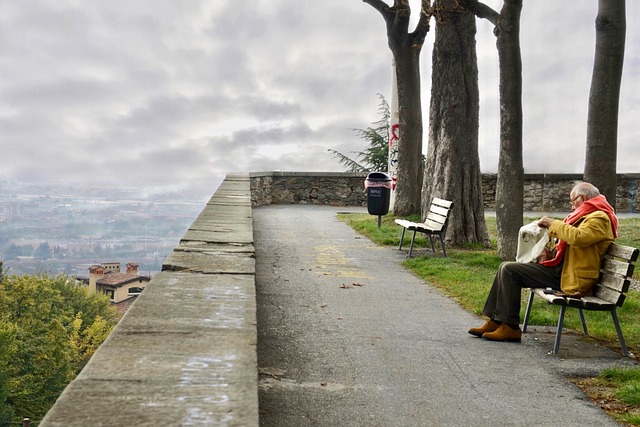Creating a safe and supportive home environment is vital for empowering aging family members. By leveraging senior caregiving resources, families can identify and mitigate hazards like slippery floors, improving physical safety and emotional well-being. Aging in place solutions, including grab bars and organized spaces, promote independence for seniors. Elder financial assistance and emotional support ensure they maintain autonomy comfortably at home. A comprehensive safety assessment, practical elder care tips, and family support are key to managing aging parents' needs while enhancing physical safety and emotional well-being.
Ensuring safety and comfort in home environments for seniors is paramount as they age gracefully. This comprehensive guide delves into essential aspects of creating supportive living spaces. We explore evaluating home hazards, implementing practical solutions to minimize risks, and promoting independent living through aging in place modifications. Additionally, we provide elder care tips, navigate senior caregiving resources, and emphasize emotional and financial well-being for both seniors and their families, offering valuable insights for managing aging parents’ needs with family support for seniors.
Evaluating Home Hazards and Creating a Safe Space
Evaluating home hazards and creating a safe space is a critical step in supporting aging family members and ensuring their well-being. As seniors age, their homes may present risks that can be mitigated with proper assessment and modifications. Elder caregiving resources are abundant, offering tips on identifying potential dangers such as slippery floors, uneven steps, or cluttered spaces. These hazards not only pose physical risks but also impact the emotional health of the elderly, making them feel less secure in their own homes.
Family support for seniors is essential, especially when managing their needs becomes challenging. Aging in place solutions focus on adapting living environments to accommodate changing abilities, promoting independence and quality of life. This can include installing grab bars in bathrooms, adding non-slip flooring, or rearranging furniture to create clear paths. Elder financial assistance and emotional support are also vital components, ensuring seniors have the resources they need to live safely and comfortably while maintaining their sense of autonomy.
– Identifying common home hazards for seniors
Identifying common home hazards is a critical step in ensuring safety and comfort for seniors who age in place. As family members consider support for aging family members, they should look out for potential risks such as slippery floors, poor lighting, and uneven steps. These simple yet significant modifications can make a world of difference in enabling elders to manage their parents’ needs with dignity and independence. Implementing aging in place solutions not only enhances physical safety but also contributes to emotional well-being by fostering a sense of security in familiar surroundings.
When providing elder care tips, it’s essential to explore resources like senior caregiving organizations that offer guidance on elder financial assistance and emotional support for elderly individuals. These organizations often provide valuable insights into managing the unique challenges that come with aging, including home hazard identification and mitigation. By leveraging these family support for seniors networks, caregivers can access practical tools and advice to create safer living environments while ensuring their loved ones receive the best possible care.
– Conducting a comprehensive safety assessment
Creating a safe and comfortable home environment is paramount when supporting aging family members. The first step in this process involves conducting a comprehensive safety assessment. This thorough evaluation should consider all aspects of the senior’s living space, from clear navigation paths to the accessibility of essential items like medication and emergency contacts. By identifying potential hazards such as loose rugs, poor lighting, or complex appliances, caregivers can implement practical elder care tips tailored to their loved ones’ needs.
Available senior caregiving resources offer invaluable guidance on managing aging parents’ needs. These resources promote aging in place solutions, ensuring seniors remain independent while mitigating risks. Additionally, they provide insights into securing elder financial assistance and offering emotional support for elderly individuals. Caregivers can leverage these tools to create a secure environment that not only addresses physical safety but also fosters emotional well-being, enhancing the quality of life for their aging family members.
– Implementing practical solutions to minimize risks
Creating a safe and comfortable home environment for aging family members is a crucial aspect of supportive caregiving. Implementing practical solutions can significantly minimize risks associated with aging, enabling seniors to age in place with dignity. Family support for seniors involves adapting living spaces to accommodate changing physical abilities and needs—a key elder care tip that ensures their safety and independence.
Elder financial assistance and emotional support for elderly individuals are equally vital components of comprehensive senior caregiving resources. Many managing aging parents’ needs can be facilitated through simple yet effective modifications, such as installing grab bars in bathrooms and ensuring clear pathways to prevent falls. These aging in place solutions not only enhance physical safety but also foster a sense of security and well-being for the elderly, allowing them to maintain their quality of life.
Creating a safe and comfortable home environment is a valuable investment in the well-being of our aging loved ones. By identifying and mitigating potential hazards through regular assessments, we can ensure they age gracefully and securely in familiar surroundings. Implementing practical solutions, from improving lighting to installing safety equipment, not only enhances their quality of life but also provides peace of mind for family caregivers. Remember, supporting aging family members requires a holistic approach that includes emotional support, financial assistance, and easy access to senior caregiving resources. Embracing these strategies enables us to foster a sense of independence while navigating the challenges that come with managing our parents’ needs as they age gracefully at home.
